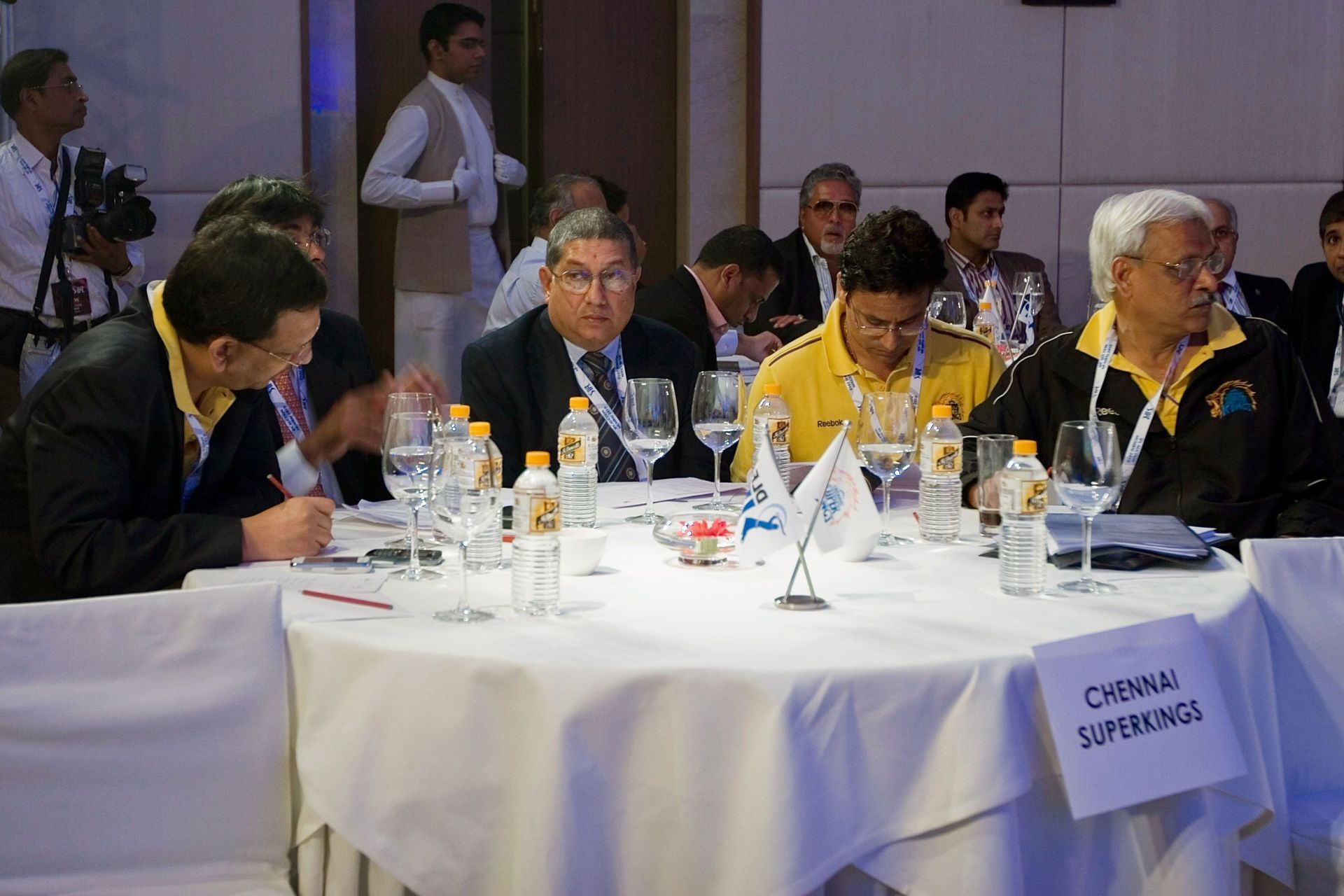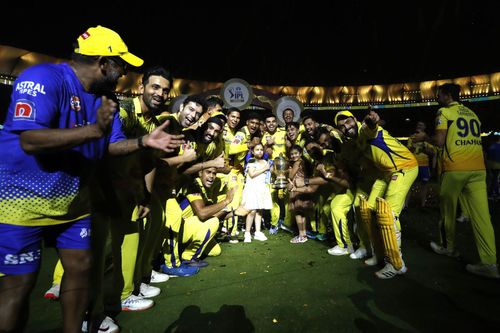
Leg and off - debating the good and bad of a mega auction in IPL 2025
The highly anticipated IPL 2024 season begins with a blockbuster clash between the Chennai Super Kings (CSK) and Royal Challengers Bangalore (RCB) on March 22.
While fans grab their popcorn to go through the ebbs and flows of the two-month IPL season with their favorite teams, they will also keenly follow the tournament with one eye on the IPL mega auction before next season.
Despite some question marks over the mega auction after the 2022 edition, the grand event returns for IPL 2025, as recently confirmed by Chairman Arun Dhumal.
In a recent conversation with Sportstar, Dhumal said:
"We will have the Mega Auction for sure, where you get to choose three-four players and then you have a new team. That makes it more interesting and that format will continue."
Auction dynamics and the teams' strategies for the players going under the hammer have become a crucial part of the IPL, often having a massive bearing on the eventual outcome.
However, several disturbing and welcoming trends have stirred the debate on the pros and cons of mini and mega auctions. While the former has no cap on the franchises' player retention, the latter allows retention of only 3-4 players (the number is subject to change for each mega auction).
On that note, let us look deep into the good and the bad of having an IPL 2025 mega auction.
The Good: Eradicates the mini auction loophole & helps the IPL brand from 'predictability' fatigue
It is no secret that the most expensive buys have come at the Mini Auction due to the teams retaining their core and only looking to address the specific issues from the previous season.
The Aussie pace duo of Mitchell Starc and Pat Cummins became the most expensive purchases at ₹24.75 and ₹20.50 crores in the mini auction for IPL 2024. Adding to this, nine of the 10 highest buys in League history have come at the mini auction, making it almost a tactic for several overseas players to skip the mega auction and enter the mini auction.
The buys at the mini auction go for absurd rates, well above the players retained, and the highest purchases at the mega auction, thus highlighting the need for the mega auction.
RCB's wicketkeeper-batter Dinesh Karthik even pointed to this being an unhealthy trend by saying on CricBuzz:
"The mini auction is definitely used by players and agents very cleverly where they bring them on into the mini auction, and they go for absurd unheard of prices knowing that the teams come in with a lot of money and they have some holes to fill and enhance their price skyrockets to a different level."
He added:
"It is not a fault of theirs. They are just prioritising their countries, their cricket, looking after their bodies, and realising, ‘Okay, now I will come in’. But also it is a bit of a tactic. I think players and agents are using this as a tactic. Instead of coming to the main [mega] auction, which happens every three years, they let that pass and come in the mini auction that happens the year after … Because of the holes available, they go for some crazy price. I think this unhealthy trend should stop."
While Karthik called for a ceiling price for players at the mini auction, the reality is that the loopholes are blatantly evident, making the mega auction for IPL 2025 a must.
The other benefit of the mega auction is the prevention of franchise-players fatigue from setting in amongst fans and adding a renewed freshness and unpredictability. With teams only able to retain a few players, it opens up the possibility of several star players moving to a new franchise, adding intrigue to the subsequent season.
Think of how an AB de Villiers moving from Delhi to Bangalore and a Rohit Sharma moving from Deccan Charges to the Mumbai Indians in the 2011 mega auction changed the landscape of the IPL. Such monumental moves make the mega auction arguably the most sought-after event in the cricketing calendar.
That apart, the mega auction also helps avoid the 'Rich get richer and the poor get poorer' syndrome, especially with off-season trades growing by the year. A case in point is the recent Hardik Pandya trade from Gujarat Titans to the Mumbai Indians.
The move has substantially tilted the balance of power, and not having a mega auction would only help the higher-ranked sides get stronger and vice versa. The event brings the poorly performing sides over a two or three-year span back into the equation and provides them with renewed hope.
One of the prime examples as evidence was how the sixth and seventh-placed sides of the 2013 season, Punjab Kings and Kolkata Knight Riders, benefitted from the 2014 mega auction to play each other in the final of IPL 2014.
Having several competitive teams and reducing the gap between the top and the lower-ranked sides is arguably the best aspect of the IPL mega auction.
The Bad: Hinders the Players-Franchise-Fan connection and affects the top-ranked sides

It is not all fun and games with the IPL mega auction. More than the results on the field, the league is an emotion among Indian cricket fans, resulting from a distinct connection between them and the players of their supported franchises.
However, the mega auction often ends in drastic overhauls of the squads, with only two or three core players retained. The regular fan, usually a follower of the 'Known devil is better than unknown angel' formula, loses interest due to the disconnect stemming from fresh faces.
The proof was in the pudding when TV viewership reduced considerably in IPL 2022, the last time the mega auction was held. It usually takes time for fans to again buy back into the new set of players, and this relationship has been vital to the successful sustenance and rise of the IPL.
Another bad thing about the mega auction is that it neutralizes the benefits the top franchises derive from an excellent scouting system. With the scouting used for talent recruitment and a solid support staff, the elite franchises put in the hard yards to build a solid core for the long run.
The rewards of their efforts are occasionally reaped only after 2-3 years. However, the pressure of retaining only the established players results in them letting go of the other home-grown players who become stars elsewhere.
Just think of all the former RCB players and how they became star performers in their subsequent franchises simply because of being forced to retain only their heavyweights and let go of the others.
The mega auction also wrongly rewards the teams for repeatedly making unwise moves and building an unbalanced core squad by instantly providing them with an opportunity at the reset button.
In conclusion, the 2025 mega auction will continue to be full of excitement for the fans and all those involved with the IPL. Yet, with all its thrills and spills and the massive boost it brings to certain aspects of the League, there is also a gloomy side that needs introspection for better balance in the future.